Immigration Standoff
This title is not mine. It is the way CNN describes the negotiations in D.C. around budgets and DACA. Please. Driving through New Mexico today, NPR runs a story. Here for the first time the phrase (and legal outcome of a successful appeal to an order of deportation) emerges: "withholding of removal". This double negative presents a laughable (if it weren't ridiculous) gesture. It insists on suspension. A drama that plays itself out in the social sphere and over the head of immigrants. A stay, as it were. Immigrants. What would be too many times to mention "we are a country of immigrants"? When the language of otherness, the language of raciscm, confronts itself. When will it be possible to live in contestation rather than in and towards the illusion of compromise? When we Revolt, She Said. (January 25, 2018)
Hard Edges
Judy, the nun who drives me through the point of entry from Douglas to Agua Prieta recommends that I read Peg Bowden's "Land of Hard Edges". By the time I do so, I will have learned that immigration is not the same as migration across the Mexico/U.S. border. One comes with papers, the other does not. Migration is more closely aligned with a refugee status. "People wouldn't leave their homes on a lark," Judy insists. With increased border and asylum deterrance, Aqua Prieta has become a site of transit limbo which now reminds me of the book by Anna Segurs. Some agree to carry drugs in exchange for being brought across. An agent with border patrol claims that 80% of those caught with drugs are these desperate migrants. And now they won't be deported, they'll be imprisoned. When a nation State refuses to provide refuge to refugees, what kind of neighbor are they? Individual agents of mercy (not to be confused with NGOs or humanitarian aid) take it upon themselves to serve those without a home; to welcome them as Jesus was welcomed. Today, the U.S. no longer deports through the Agua Prieta crossing. Anyone caught near Douglas is repatriated through Mexicali or Texas or Nogales. This disorientation is a form of punishment. Deportation. Repatriation. These are the modes of kindness and hospitality in which our representative democracy trades. (January 19, 2018)
Death Mask
Pancho Villa's death mask. One of four replicas. This, the only one without ears. To be a historian and archivist is not for the faint of heart. It is the strangeness of certain collections though that can only be drawn out through the perception of the researcher. Perception. So the question of whether or not it is appropriate to describe Pancho Villa's raid in 1916 as a terrorist attack is clarified by Columbus archivist Richard Dean. "His raid produced terror". He's not wrong. From all accounts, it most certainly did. Some folks in Columbus see this raid from Pancho's side: as courage and confrontation, both of which are re-enacted by cabalgata. Some say Villa's raid was in retaliation for the U.S. recognizing Carranza after stringing Villa (and his dutiful allegiance to Wilson) along for some 4 years. Recognition of a country in revolution was something to which the Wilson administration was allergic. This then means that overtures between Wilson and Villa in letters and meetings with surrogates constituted an unconventional diplomacy. (January 12, 2018)
Speedway Away
When in the middle of nowhere, an abandoned race track appears on the horizon, an infinite number of questions also emerge. Economic viability in a region situated between New Mexico Route 9 and U.S. Border with Mexico, just West of the Santa Teresa point of entry is a joke. There is nary another abandoned structure even in telephoto sight of this place. The Rio Grande Expressway was something else in its heyday. Speculation from nearby residents (expressed with some certainty) is that this was built with drug money and then abandoned when the property was confiscated by U.S. officials. This is what confiscation of assets looks like. Nothing like the fantasies of how lucrative seized cartel assets can be deployed. (January 6, 2018)
Coyote Zone
Between the rusty scalable fence (not unlike the roll-down gate for retail) and the taller chain link/barbed wire fence sits the Border Patrol zone. White trucks with their trademark green stripe park and drive this stretch. In this buffer zone between fences are the surveillance towers which fail to capture crossers when they have made their way to standing directly below. Knowing the shift changes for the Border Patrol is an important aspect of the coyote's pre-planning. Unlike the idea of human traficking that often refers to forced migration in the sex trade, human trafficking along the Mexican border more often involves migrants willing to pay money to be shuttled safely across. There are many modes of such a crossing but the mainstay is still running across an opening in the line. The buffer zone of Tijuana remains the most open of crossings that don't, in the end, dump a migrant to the hostile open landscape of the Sonoran desert. In a way, this zone is designed to expect such crossings. After all, Southern California needs its cheap, exploitable labor. (January 1, 2018)
Street Life
It is stark. The active street life of Tijuana exists in profound contrast to the emptiness of its immediate northern neighbor San Ysidro and by extension, San Diego. Home life spills out, extending the domestic into the public sphere. And these New Year fireworks don't explode in a grand display singularly located but rather engulf you with proximate sounds and sulphur...and the occasional bullet. Those Tijuana hills. The roads which traverse them, the houses perched on them. They have a vibrant coherence. Theirs is an architecture integrated with the logic of geography and use. Then how to read the neighboring lots left half-empty by abandoned structures or jammed full with objects held tight by slats of wood? When to understand small as quaint and when to ascribe it to poverty? Perhaps housing here is used, rather than displayed like in the U.S. The reality built by real estate in the U.S. trades on the logic of a clean surface; like preferring poison over pathogens in our water. The superficial attains value. To what else do the sterile homes of American suburbia attest? They appear un-lived in. Abandoned, emptied. At least the Tijuana lot has a trace of lived reality. On the other side of town, developers continue to build a condo complex just moments away from the San Ysidro crossing for Americans. Will it fail like the resort, built by an ugly American, in 2006? (December 31, 2017)
Redeemer Ritual
The impossibility for a radical Marxist turn to take root in Catholicism is perhaps rooted in the idea of transubstantiation. Had Catholic liturgy embraced symbolism and metaphor (how the word makes ideas and beliefs manifest), it may have been possible to substantiate actual humans as agents of goodwill. Christmas is a portal onto the problem of the "word" of god. Perhaps God doesn't speak. If living God-like ideals and principles is so central to monotheistic faiths then perhaps each of us holds that holy. Well, that's what I was meditating on seated in the front pew of St. Agnes church; the church in which I myself was made. And then I purchased Zizek's The Fragile of the Absolute. Thank god for that. (December 25, 2017)
Manifest Station
At a fundraiser for PJ Starr's upcoming documentary on Monica Jones, I am thrown back to my hometown. What does it mean to "manifest"? The law under which Monica Jones was convicted in Phoenix, suggests that to walk in particular neighborhoods is to do so as a prostitute. Walking trans in one's own neighborhood is not prostitution. But what does Monica Jones manifest? When does manifestation become a call to arms? The French already call their protests a manifestation. To manifest then is not just protest, it is declaration. The case of Monica Jones forces me to confront the invisibility of an entire population in the 1960s and 1970 hidden behind what was then and continues to be called "the other side of the tracks". Making every line visible is crucial to challenging the politics of race and class as they make themselves manifest in American. (December 18, 2017)
Mestizo Lady
The Feast for Our Lady of Guadalupe is a secular celebration that has been absorbed by the Catholic Church throughout Latin America and in predominantly Hispanic parishes of the United States. The Church of St. Marks in El Paso is devoted to this story of the peasant Juan Diego. More broadly, the Catholic Church in the Southwestern United States knows it must minister to their majority Hispanic communities or lose them. The Catholic Church is/like/a state apparatus which itself is/like/a fence. Gloria Anzaldua wrote: "The border is una herida abierta [an open wound] where the Third World grates against the First and bleeds." Numbers. Hispanic majorities. A potent power not only in modifyng Catholic ritual but perhaps to shape politics. And these significant numbers are now spreading out from the Southwest throughout the rest of the United States. (December 12, 2017)
Columbus / Palomas
Border shopping. Dental work. The economic advantages of the line in Palomas accrue to U.S. citizens. This is so obvious as to be almost not worth mention. That is the nature and purpose of traffic south. Going north every day is a bus that picks up Mexican children to be taken to and from their school and nowhere else. From kindergarten through high school, children born in the U.S. whose parents are not citizens are given an education north of the line. According to the Columbus librarian, this obligation developed from the practice of permitting Mexican mothers in labor to cross north to Deming, New Mexico as there is no hospital in close proximity to Palomas. Traffic north at this crossing also involves 120 semi-trucks and tanks exporting chilis and chili oil. "You cannot imagine all the things chilis are used for," muses the ranger at Pancho Villa State Park. I imagine one is certainly pepper spray. Pepper spray, one of the first non-lethal methods of discipline deployed in U.S. maximum security prisons where over 35% of the population is Hispanic. It is not irony when it is cruel. (December 9, 2017)
Salient Facts
Here are some numbers from the research and advocacy group Hope Border Network. There are over 70,000 undocumented citizens in El Paso County which is 10% of the entire population. This is largely the result of the split family construction where certain generations were born here and others were not that the Dreamers initiative implemented under Obama was intended to resolve. The rights conferred under this law expire within the year and a very palpable dread hangs over El Paso. Illegal immigration is a category the line itself constructs for the purpose of exploiting labor. Border Patrol targeted immediate crossers under Obama for deportation. Now, ICE focuses attention on the interior and just released their numbers: an over 30% increase in deportations. In collaboration with local law enforcement Hispanic people who have lived north of the border with their families for decades are being rounded up and deported. Deported. The "repatriation" of Mexican nationals has always moved people south. When will this process acknowledge land grants for families dating back before the 19Century in order to see migration north as true repatriation? (December 7, 2017)
BiNational Conceit
Following a journey along part of the Arizona border, I return to El Paso. The Jesuit church Sacred Heart proudly stands in the center of el Segundo Barrio at the southern tip of the city. This neighborhood is a living document of just how El Paso and Ciudad Juarez are the same place. This border region has been described as a bi-national community which sounds like a site of resistance to the conceit of opposites but in fact is the rubric under which multi-national economic planning finds cover. Nevertheless, el Segundo Barrio is a testament to the absurdity of the border here. And it is threatened with extinction. It doesn't live up to El Paso's idea of itself as a cosmopolitan destination. A symphony. A stadium. Here, the approach to gentrification is a gringo's mantel of cultural hegemony and aesthetic hierarchy. Give me the adobe because to eliminate these structures, to plow them down as city leaders are currently attempting to do in Barrio Duranguito, is to erase a living history. To run a fence through a neighborhood or a freeway is urban planning with an erroneous view of future. What if every city modeled itself after Walter Benjamin's Angel of History? (December 4, 2017)
Dotted Line
In Douglas, the Hispanic custodian of the local historical society wants to make sure I understand that the people of Agua Prieta made from their fence some "lemonade". That is, they painted a mural on their side of the fence. Peering through the layers from the U.S. one sees and certainly can hear how life lives right up to the edge "over there". She tells me that some activist nuns live in a convent across the street from the gas station. I leave the lobby of the Gadsden Hotel and the story of Pancho Villa's stay here during the battle of Agua Prieta. Three women cleaning vegetables, living communally welcome me into their kitchen. It's a sleepy afternoon. They tell me there is another vigil on Tuesday when they will carry another cross to mark the site of another migrant who died in this harsh desert. I might want to come back to document their town's Las Posadas. In Douglas, it is not Joseph and Mary but Jose and Maria that enter town on the back of a mule in search of shelter. In the borderlands, these rituals are not a metaphor. (December 2, 2017)
Good Neighbors
Naco is just this side of becoming a ghost town. Shuttered one floor buildings stand as if there could have been a time when pedestrians existed here. Well of course there were. And renegades. I wish the people who lived in Arizona's Naco today weren't shoved up against a poor, rickedty fence only to be dominated by the metal frontera fence finished earlier this year. Guess the mesh wasn't enough. Stunning in its audacity. As it turns out, most of the residents of these bordertowns in the United States are Hispanic. So too, en el otro lado. Not exactly clear how a fence is necessary for this town's residents. And it's not a little unsettling to feel like what's left of a home now feels like a prison. Well, on the other side (two blocks in the other direction) of this small town is a golf course and every April, folks play volleyball over the fence spawning feel-good international articles. Some people are "making the best of it". (December 1, 2017)
Nut Mix
Nogales. Same name both sides. Nogales means walnuts. Nuts and trains had a hand in making this town the center of the Tucson-Guaymas trade route. One town divided now by a metal line that snakes in and out of valleys then over crested hills. The woman at the Pimeria Alta Historical Society moved here 24 years ago. She has so much energy in her mind she says. So thrilled to show the relics removed from a 100 year old time capsule buried behind a copper plate in the clock tower. They buried a new one to be opened in another 100 years. Wonder, if anyone cares then, what they'll make of the proud and florid remains. Then there's the case of birds, she says. From Massachusetts they came on the first train arriving to the station. A station that only exists now in photographs as it was later destroyed to make room for border patrol. Now just goods, not people, pass through Nogales by train. Suppose that had always been the most important thing back then in the heady days of the Gadsden Purchase. So those birds. So many birds like new in that case. Brushed like new with an elephant's tail. They are mezmerizing, those birds. (November 30, 2017)
Desert Fences
One might return home. One might not. Either way, home haunts. Every fourth of July in what was not always the heat Phoenix now has, I climbed these buttes. All the way to the top and then as sun set, I would run back down them. Perfectly navigating rocks as if flying. Later when I read the Carlos Casteneda books, I understood the description of Don Juan's flight to be that running in the light where edges blurr. Dusk. Now fear runs like this fence does: chaotic and desperate in an unsuccessful attempt to stop. To stop what? To what end, a fence? A fence in a desert landscape is funny. Odd actually as it erects its authority on a field that refuses it totally. Find me a right angle here. Go ahead. Well the pathetic failure of fences is precisely what the "patriots" further south in my home state of Arizona (like Glenn Spencer) have as their rationale for building a wall. We agree on the failure of fences. We do agree on that. But then the bully of a wall (no matter how one builds it) is another matter. At least with a fence, the wind still blows. What if we stopped building? All of it. Let the wind and water and light and sound and all of us wash over what one day could only otherwise hold ruins. (November 28, 2017)
Ruling Thirds
The line is one of those things in nearly every academic discipline that figures an area's coherence; ensures a domain's purview. Geneology, Geology, Geography, Geometry. For example. In image-making, composition tames its field by a rule of thirds. In this grid, the head occupies the top third with this horizontal top third explicitly marked as the horizon line itself. Cacti inhabit the lower third. In the no man's land which draws the eye to the foreground runs the wavering river. Perhaps a tangential meditation on a painting of Francisco Martinez (1906-1979) by Carlos Rossas. One might simply park the car in this lot for the Martinez Brand of crackling pork snacks in El Paso and not stop to ponder the symmetry of Rossas' painting on the building's exterior wall. This painting paints division as a river that decapitates a man who, born in Juarez in 1906, rises in an emblematic vanishing point depicting El Paso del Norte. The white cross on the mountain to the west (if one reads maps with cardinal north up, west left) winks at the painting's own symmetry as perhaps Mount Cristo Rey still does when it insists on bi-national community through a border-crossing pilgrimage each Holy Week. This particular valley marks the madness of the U.S./Mexican border as families reside within, beneath, across it here. (November 24, 2017)
Border Survey
And then there's the town of Anthony. New Mexico and Texas. This town straddles a state line. Almost as absurd as national boundaries. Following the 25 mile stretch from the trifecta of Mexico, New Mexico, and Texas which meet at the Rio Grande, this state line travels north when suddenly the line turns east thereby dissecting the town of Anthony. This is a study in lost rivers as the TX/NM state line had once followed the Rio Grande's trajectory. However tangentially related to the border with Mexico, this little stretch of U.S. line has much to offer as a study of the arbitrary. Will (re) survey this line. Note One: This particular sign (pictured here) is across the street from a house it dissects. Who was here first? Here's hoping the owners will want to discuss their property tax bill. (November 20, 2017)
Bravo, River
The Rio Grande (aka Rio Bravo in Mexico) marks the border between Texas and Mexico. The derogatory name for a Mexican immigrant used to be "wetback" as it assumed that most border crossing happened by swimming. In 1953, the U.S. utilized this obsene nomenclature for its Mexican repatriation project. This river also marks a small part of the Texas border with New Mexico; a mark that now stands on any map as an absurd and squiggly line that emphatically diverges now from the river's path. Or vice versa. This section of the Rio Grande is today a dry riverbed, having been seasonally dammed upstream. If the whole river dries up, how will these borders that depend on the river retain authority? Rivers make bad lines. Standing here in Anthony over a bed marked by tire tracks, I can't get "Old Man River" out of my head. And why should I? (November 18, 2017)
Faction Function
When Pancho Villa crossed the line into Columbus, New Mexico in 1916, the United States army, led by General Pershing, crossed back over the border in a Punative Expedition. Villa was not captured. Was not killed. Yet. Villa knew the intricacies of the Northern mountains. All of the "American" Southwest is/was part of Mexico's Northern Territories. Exploring Sunset Heights in El Paso reveals that Villa also knew the landscape under the earth's surface: the art of the tunnel. This line could also take the shape of a burrowing channel, a labyrinth. Mapping requires vertical lines as well as horizontal ones...like the best of film editing demands. Perhaps it is not a coincidence that the notion of vertical montage came to Sergei Eisenstein when he was making his unfinished Mexico film in the 1930s. (November 15, 2017)
Linear History
A history of the arbitrary line that runs West from El Paso to the Pacific Ocean starts with the Treaty of Guadalupe Hidalgo. This declaration, like the NorteAmerican War with Mexico itself, was driven by the delusional project of "manifest destiny". Delusional fatalism is structural. Turn to Deleuze & Guattari. On the Line will be a crucial conceptual touchstone. Mapping resistance need not manifest itself in the structure of binary opposition if one explores the borderlands as a contact zone; a zone of contestation where difference is not something to be erased and resolved even if into dialectical synthesis. Difference is to be engaged, not endured, not tolerated. The myth of tolerance is one of the many problems troubling neo-liberalism's humanitarian impulse. Form for a multi-pronged project cannot, in searching multiplicities, necessarily be articulated in advance but rather, most likely, will be something discovered. What was walking the earth before learning to read stars? (November 13, 2017)
Carrying Crosses
Perhaps 300 years seems like a very long time. Certainly for objects that survive the vagaries of human migrations and neglect or pure obsolescence (as if such a thing is ever pure). Objects no longer of use become works of art, or so Heidegger claims. Is uselessness at the very center of art and its purpose? Perhaps use as a term needs an expanded definition. Use need not be instrumentalizing. An object for contemplation has this use: that of contemplation. Contemplation is useful. Simone Weil wrote that "without room for reflection between the impulse and the act, neither is there room for justice." Her essay on Force still demands our attention. (November 10, 2017)
Mission: Churches
Cannot escape the colonial escapades of Spain. Missions. Empty lots. The Mission Trail south of El Paso is an "authentic travel experience". And without irony runs parallel to the Rio Grande (aka the border between Mexico and Texas) and its cotton fields and Border Patrol stations. Crossing is at the center of this new film project. All kinds, especially those associated with lines and signs. And churches. Catholic churches and their doctrine of suffering can be converted from heaven-bound fatalism to an earth-bound clarion call for human rights. Liberation Theology, if revived today, could clarify itself as a resistance to capitalism and its abuses within the language of living the life of Christ. Time to deal with faith and politics in the 21st Century. (November 7, 2017)
Midnight Trains
It is the light in Marfa. That is what this town in the Big Bend of the Rio Grande is known for. Well it could just as well be the Southern Pacific Rail at night. It is both the proximity of that train and the nature of that sound that together makes one feel in this place so damn nostaligic. One could imagine just how a life before computers and cell phones might have felt, well perhaps might have been experienced. Like in a blackout. How I wish for one of those. How I wish for that over guns and insanity which together hit another rural Texas town yesterday. (November 6, 2017)
Study Steer
Entering Texas with the greeting: drive friendly -- the Texas way. Perhaps driving diagonally across three lanes of traffic at 90mph in a one ton truck is that way? Hard not to feel you're not in on the joke. 93.3 FM starts out promising in Houston and another station with the same call letters veers off into platitudes by the time one rolls into Austin. Radio is a perfect gauge of culture when signals cross. When breakpoint disappears in the contamination of Can I Kick It? which itself samples Lou Reed. Radio. Radio or cows. Shall we try other Texas ways? Cows have learned this: Gather together under the shade of a tree. Rise when movement or sound is perceived. Stare directly at its souce. Disperse slowly. (November 5, 2017)
Battered Gulf
New Orleans. Ninth Ward. How many years now since Katrina? Rows of homes still boarded up. Men walking with a clothes washer in a shopping cart. Two men in a kitchen with no way to make hot food. Go to Gene's, one of them says looking back to his buddy as if to make sure my leaving will be ok. The other guy nods and gives the address. A forsaken resilience here. These men stand on the edges of a swamp against inevitable and ongoing natural destruction and human neglect. What coastal town will be the last standing? Mobile? Biloxi? Houston? Signs for real estate speculation in the Bayou fall away amidst the overgrowth of all that will be left to live here in Atchafalaya. There are no plans for evacuation. (November 4, 2017)
Heading West
Crossing the state line that separates North from South Carolina, one finds oneself "South of the Border". This roadside sideshow is a loathsome curiosity. To be fair, it is not alone in its audacity. There is Alabama. Sweet Home it says when crossing the Chatahoochee River from Georgia. Alabama. Nearly every off-ramp is a major site of the Civil Rights Movement: Birmingham, Montgomery, Selma. Perhaps this is the state where one might take the temperature of the United States. Rural. White and Black Men (on road crews together). Lesbians. Churches. College Football. Harleys. Hank Williams. Perhaps this country's future resides in Alabama. Its past certainly does. (November 2, 2017)
Going South
Halloween in Savannah. Gothic dripping Spanish moss. Yes. All of that. But it is watching Romero's Night of the Living Dead that strikes most deeply. Duane Jones. Here is the African-American actor who leads a hapless group of terrified white people hiding from the zombies. A role not "intended" for a black man makes the film an extraordinary example of both color-blind casting and writing. It is also the intelligence of this man, his unapologetic certainty. So many turns in the story when the dynamics could have festered in cliche racist fear-driven portrayals: a white woman seduction, a master/slave exchange between men, etc. Though there is the paranoid husband who can't persuade anyone to stay in the basement with his wife and child, it is more of a territorial argument between two men not between a black and a white man. But then, the unfortunate ending with police and dogs (sans firehoses) and the killing of the black man (mistaken as a zombie). More images of racism come to mind linking media coverage to domestic facts. In LA92 the overhead shot of Rodney King being beaten is repeated (this time from a news helicopter) when black men pull a white man from his truck to beat him up. Only this time the image is accompanied by a newscaster's appalled declaration of shock. America has an intractable double standard when it comes to race. And race masks class. Always. (November 1, 2017)
Leaving Brooklyn
The weather changes from late summer to winter overnight. Thoughts on gentrification and its manifestation in the old tabacco warehouses of Durham, North Carolina. A simple question: what is it one fears in abandoned stretches of America? Among the brick facade remains of manufacturing has been built the economic engines of consumption and real estate speculation. In The Book Lady of Savannah, a spine opens to Eugene Debs' Sound Socialist Tactics, a 1913 essay. Force. Again, force. Revolutionary and reactionary fissures in Socialism. How to contend with property rights that by any measure should be "held in contempt". (October 30, 2017)
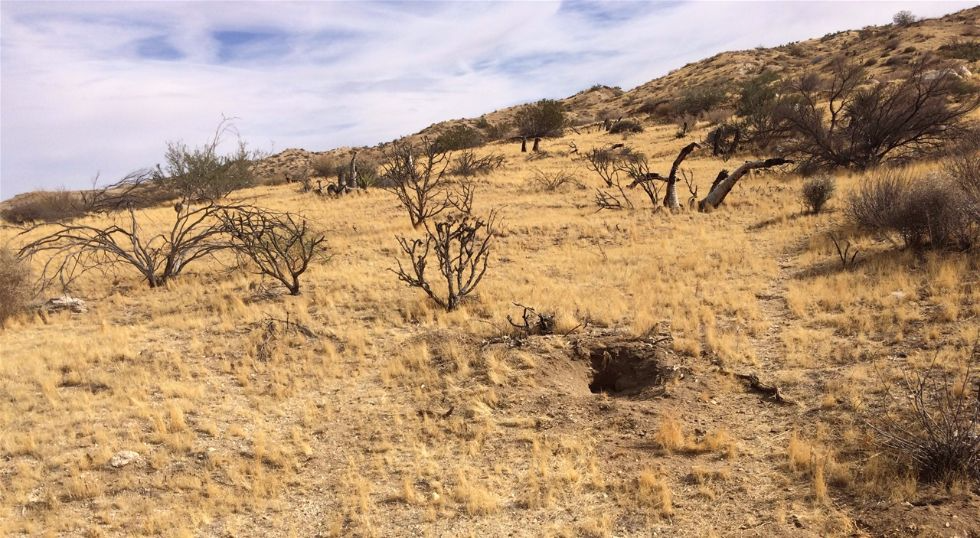
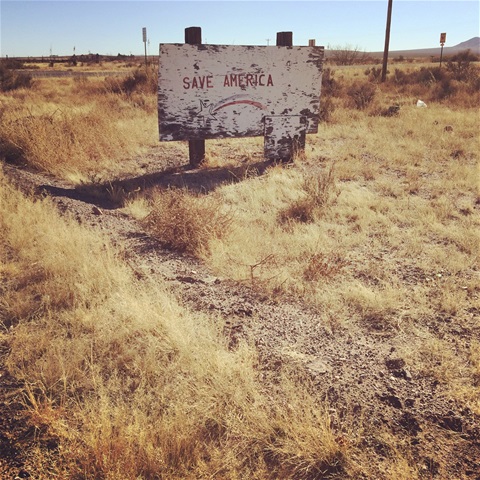
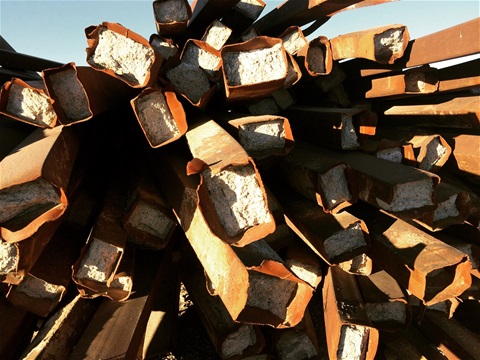
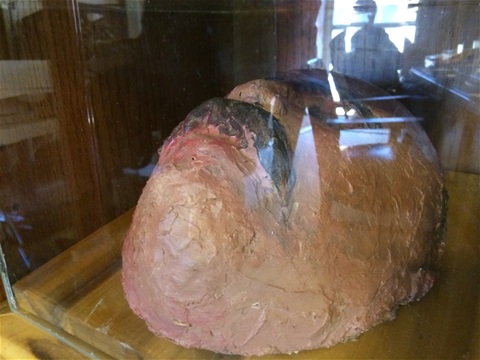
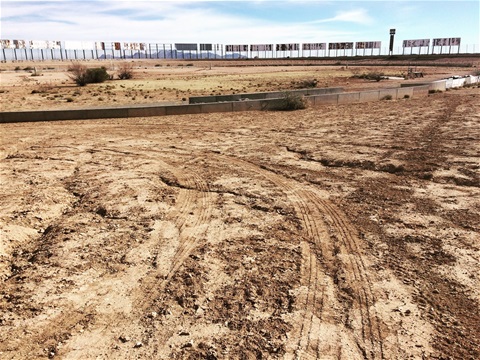
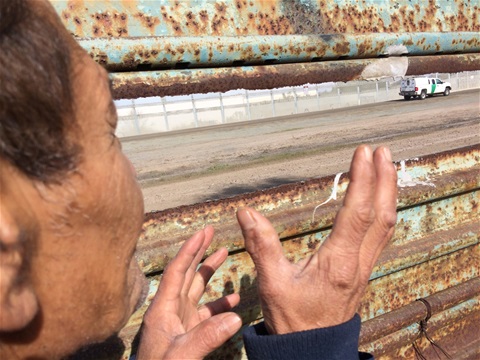
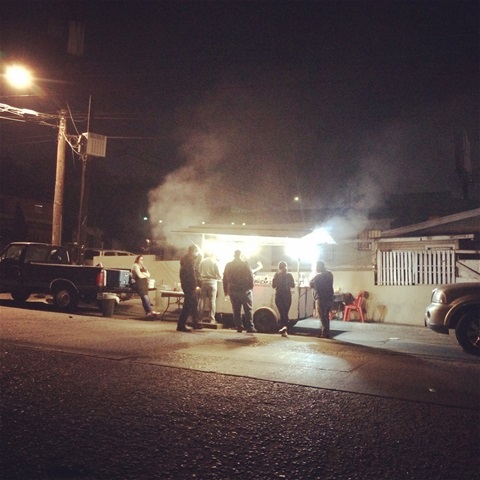
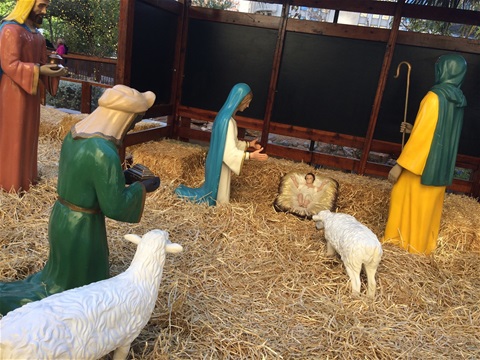
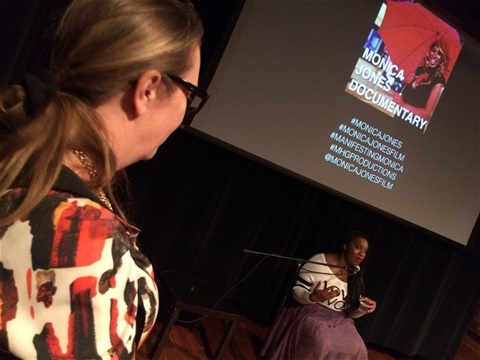
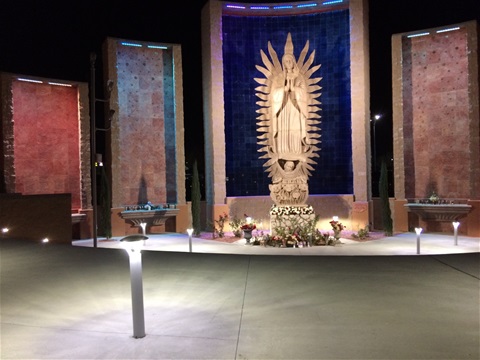
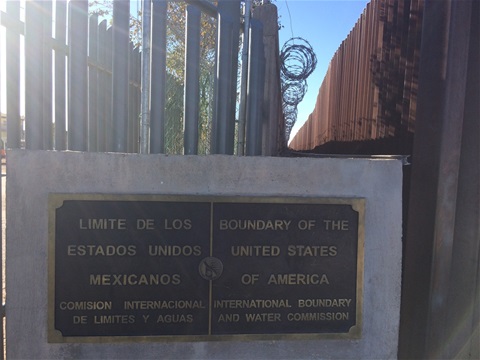
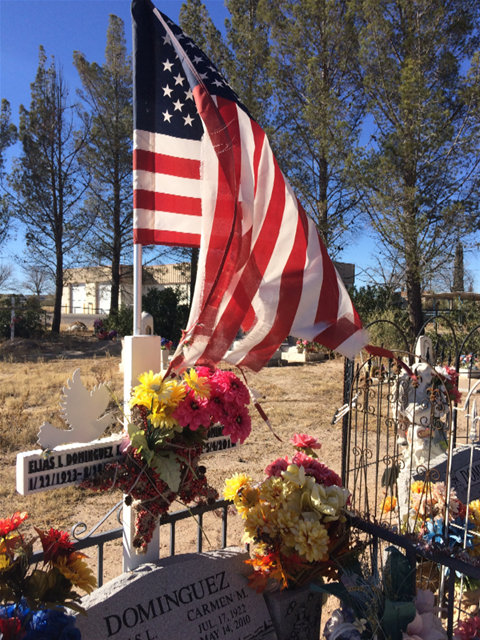
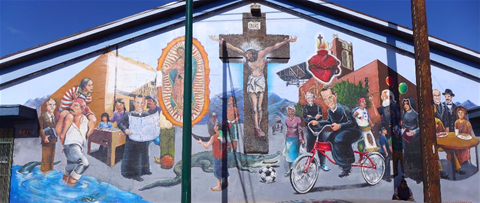
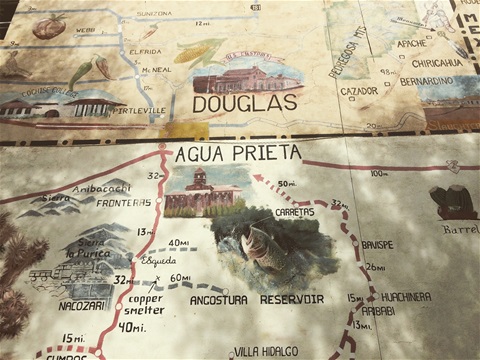
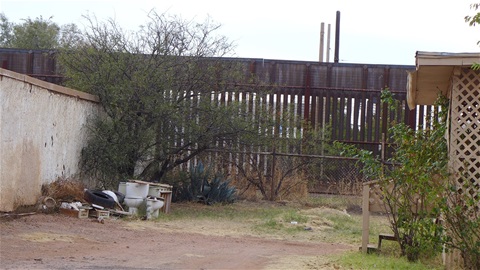
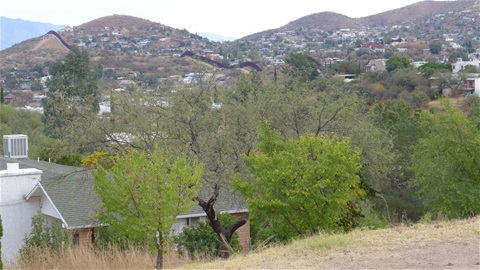
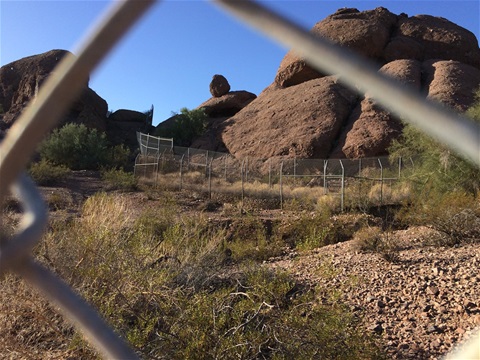
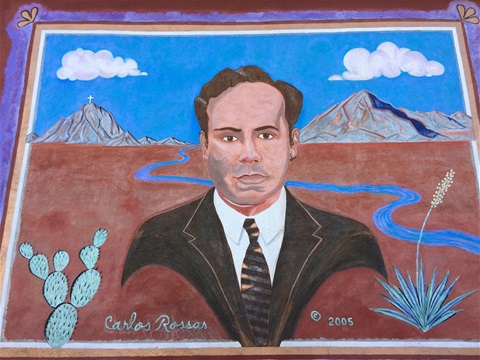
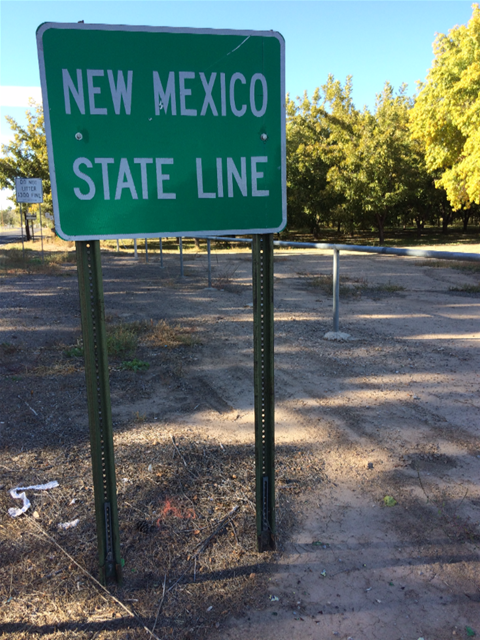
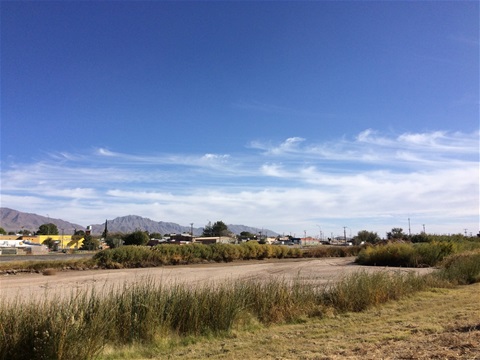
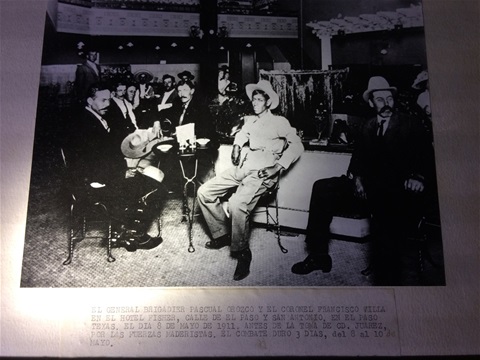
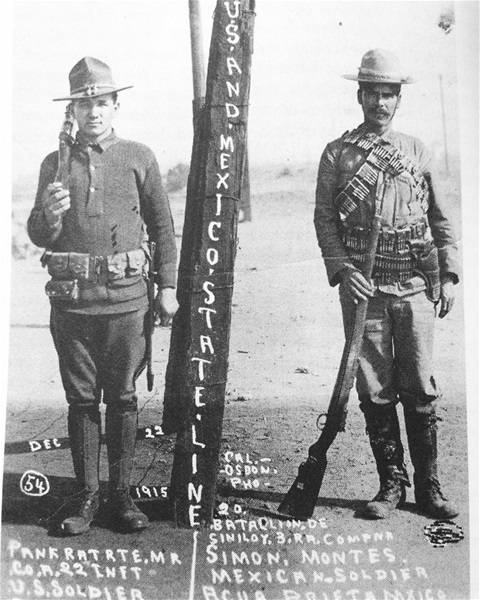
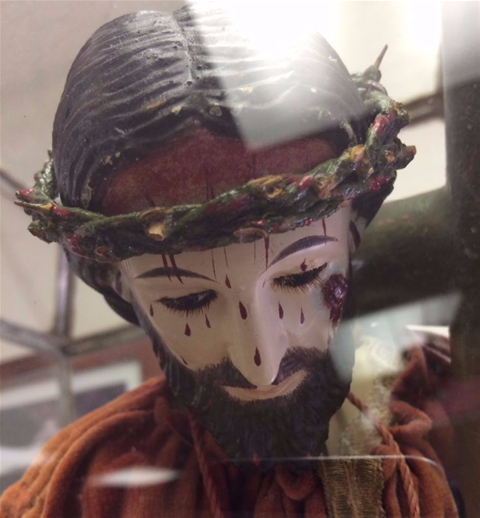
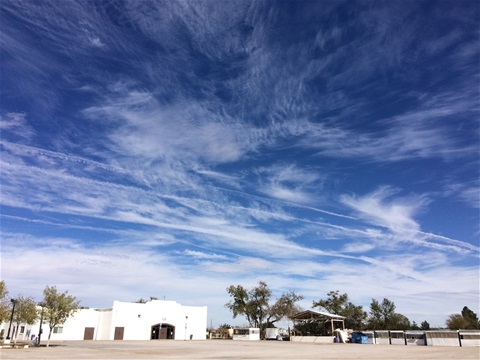
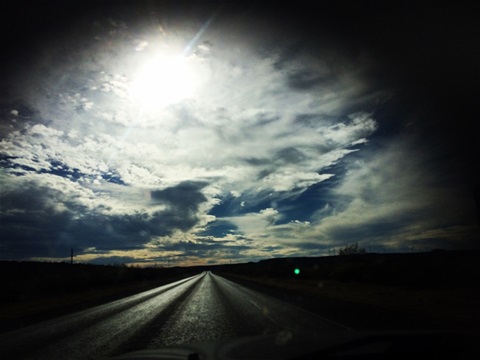
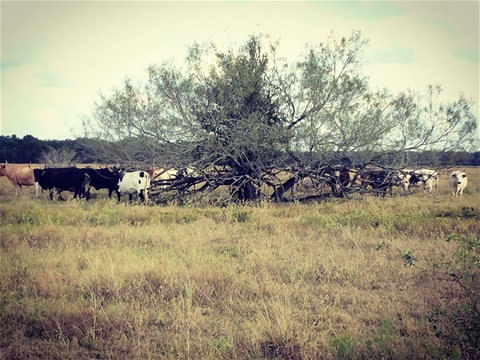
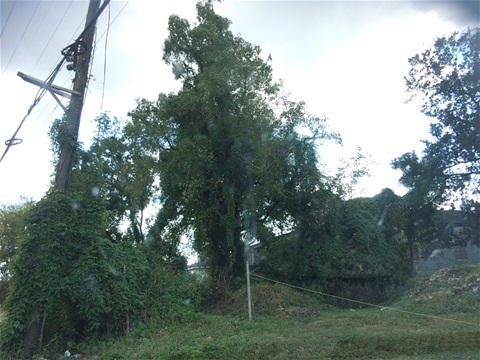
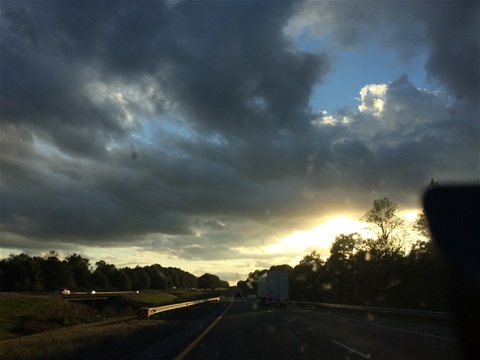
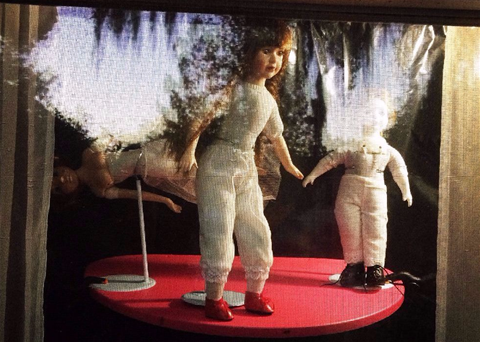
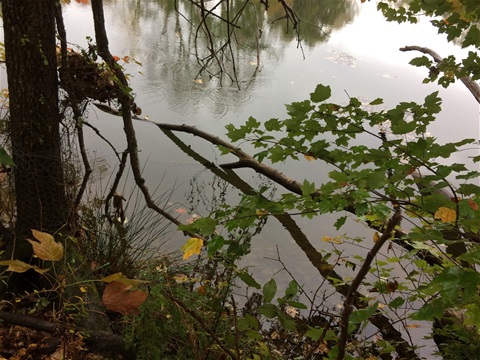
laurie mckenna
looks great!
if you are still seeking border art projects/ artists to cover my work is here:http://www.rockpaperfence.com/
Lee DeLong
Lovely, compelling, and reflective. This project has bite.
Beth Custer
Beautiful blog Cath, keep up the cool work as I know you will!
Jean Phillips
Wish you wonderful journeys as you travel .
Val Helmick
You are always welcome in Asheville!